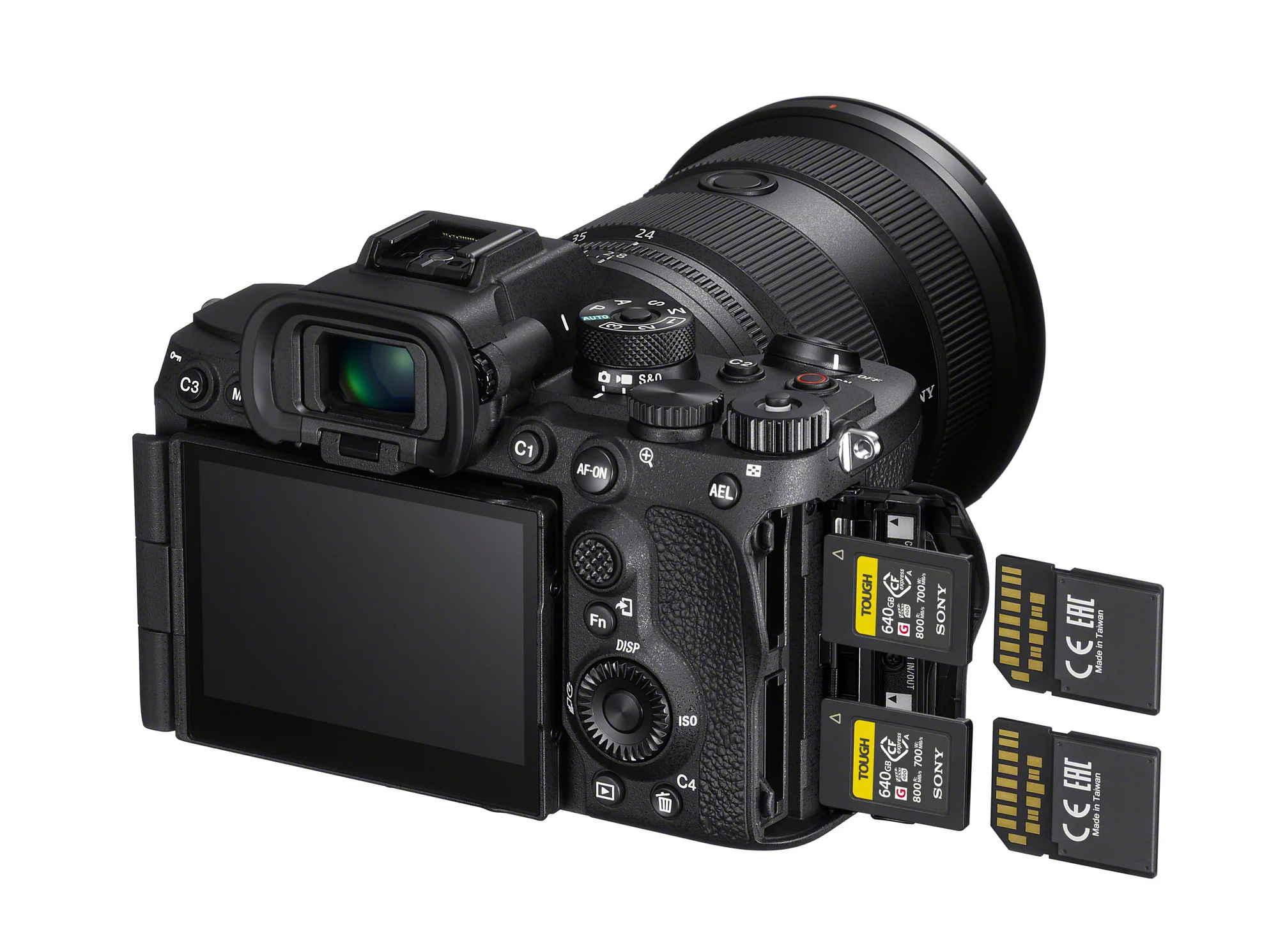
Sony has introduced the Alpha 9 III camera equipped with the world’s first full-frame global shutter image sensor.
The newly developed global shutter image sensor exposes and reads all pixels simultaneously, unlike a rolling shutter sensor that records images sequentially from the top row of pixels to the bottom. The impressive global shutter full-frame image sensor enables the camera to shoot at burst speeds up to 120 frames per second with no rolling shutter distortion or camera blackout. This innovative sensor is combined with Sony’s most advanced AF (autofocus) system to date – boasting AI autofocus with up to 120 times AF/AE focus calculations per second. With the added ability to sync flash at all shooting speeds, the Alpha 9 III opens up a new world of possibilities for professional photographers to capture every decisive moment.
“The Alpha 9 III full-frame camera is a landmark achievement for the industry,” says Yang Cheng, Vice President, Imaging Solutions, Sony Electronics. “Designed with the needs and demands of professional photographers in mind, every single update to this camera has been made to address specific input and feedback from our community. We have listened and are thrilled to bring the new capabilities of the Alpha 9 III to market – capabilities which allow photographers to capture things they’ve never been able to capture before.”
Global Shutter Image Sensor
The Alpha 9 III is equipped with the newly developed, world’s first global shutter full-frame stacked CMOS image sensor with approximately 24.6 effective megapixels and built-in memory. Combined with the latest image processing engine BIONZ XR, the Alpha 9 III achieves blackout-free Continuous Shooting Speed with AF/AE tracking of up to approximately 120 fps. The Alpha 9 III is supplied with high-density focal plane phase-detection AF. A designated AI processing unit uses Real-time Recognition AF to recognize a wide variety of subjects with high precision. By combining high-speed performance of up to 120 fps with highly accurate subject recognition performance, it is possible to easily photograph scenes and moments that cannot be seen with the naked eye.
The AI processing unit in the Alpha 9 III supports movies as well as still photography with accurate subject form and movement recognition. The Real-time Recognition AF and Real-time Tracking provide a significant improvement in human eye recognition performance, allowing the camera to automatically recognize, track, and focus on the eyes of a specified subject. The Alpha 9 III is also equipped with 8.0 stops of optical 5-axis in-body image stabilization, allowing for high-quality image rendering.

Shutter speed is freed from the limitations of conventional mechanical shutter image sensors and achieves a maximum shutter speed of 1/80,000 second (1/16,000 second during continuous shooting), making it possible to capture at high speed without any distortion. When a compatible Sony flash is attached, such as the HVL-F60RM2 and HVL-F46RM (sold separately), it is possible to synchronize the flash and take pictures at all shutter speeds up to 1/80,000 second. Previously, if the user released the shutter at a speed faster than the flash’s synchronization speed, the amount of light would drop sharply, but with the full-speed flash synchronization function, it’s now possible to photograph scenes that could not be easily captured with conventional technology. Also, when shooting stills or movies under LED lighting, the Hi Frequency Flicker function can significantly reduce high-frequency flicker problems by allowing the shutter speed to be finely adjusted to match the flicker frequency while viewing the monitor.
The Alpha 9 III features selectable release lag modes which allow the user to prioritize release lag or viewfinder/monitor display. The newly developed Pre-Capture function allows the camera to continuously record up to one second before the shutter is released, making it easy to capture moments that would otherwise be missed. When selected, the Continuous Shooting Speed Boost function allows the user to change to a faster, preset speed set by the user at any time during shooting, and enhanced burst stamina ensures that important moments are reliably captured due to a large buffer memory and increased overall system speed allow up to approximately 390 Fine JPEG images to be captured in one continuous 30 fps burst.
Customizable focus areas have been expanded to include from XS to XL in addition to the previous S, M, and L sizes. The Preset Focus/Zoom function allows preset focus and zoom settings to be memorized in the camera for quick recall when needed. In addition to the existing custom white balance frame size, the user can now select other sizes as needed which allows for fine white balance adjustment after an image has been composed. The Alpha 9 III has upgraded features such as the latest AF algorithms to achieve high AF precision down to light levels as low as EV-5 in AF-S mode (ISO 100 equivalent, F2.0 lens), AF tracking for continuous shooting at F22 and a composite RAW shooting function that gives the ability to combine multiple consecutive images into a high-quality composite.
Advanced Video Performance
The global shutter image sensor provides distortion-free image expression for videos as well as still images. For example, the user can shoot images of nearby scenery from a fast-moving vehicle such as a car or fast-moving subjects with ease. This camera is the first in the Alpha series to be able to record 4K 120p high-frame-rate video without cropping, allowing the user to shoot at the angle of view intended. It is also possible to shoot high-resolution 4K 60p videos with 6K oversampling.
The Alpha 9 III has S-Cinetone, a unique Sony feature which can create a cinematic look straight out of the camera without post-processing. S-Cinetone was created through the development of the VENICE high-end cinema camera and makes human skin tones and subjects stand out beautifully, creating natural highlights. The Alpha 9 III has the latest video performance including rich gradation performance and S-Log3, and when in Log shooting mode, it can reflect and display the user’s favourite imported LUT (lookup table). The Alpha 9 III is compatible with the mobile app “Monitor & Control” for video creators.

Operability and Reliability for Professionals
Sony has listened to the voices of professional photographers and created operability and reliability that supports professional users. The shape of the grip is improved and ergonomically designed so that it can be easily held in the palm of the hand to avoid straining the user even when wearing a telephoto lens or using it for long periods of time.
The VG-C5 vertical grip (sold separately), provides the same operability and versatility as when shooting horizontally; the user can comfortably support long shooting sessions. The grip and shutter button area share the same design as the main body, allowing image capture without feeling uncomfortable, with the same operability as the camera. The Alpha 9 III is equipped with a 4-axis multi-angle LCD monitor that can be operated by touch, allowing for intuitive operation using the latest touch menu. The electronic viewfinder uses a 9.44 million-dot Quad XGA OLED and achieves high visibility with the same brightness as the Alpha 7R V and a magnification of approximately 0.9010. Also, a custom button is placed on the front of the camera, and the continuous shooting speed can be changed by operating the custom button assigned with Continuous Shooting Speed Boost with the finger holding the grip, allowing for highly immediate operations. It supports professional photographers when shooting in all environments.

High-Speed Workflow
New features for the Alpha 9 III include a playback image filter that allows the user to efficiently select a large number of images using high-speed continuous shooting, and a function menu that can be used even during image playback, strongly supporting professional workflows from shooting to delivery.
The “Playback Function Menu” can be assigned in advance, so the user can perform protection, smartphone transfer, File transfer protocol, etc. during image playback. The user can select images narrowed down with a playback filter and play them from the function menu, allowing for quick delivery of specific images. The camera has a dedicated microphone for voice memos on the back, and by positioning the built-in microphone near the user’s mouth allows clear recording of audio even in noisy environments. The recorded audio data can be transferred via FTP along with the images. The camera allows the user to set up to 20 presets from the International Press Telecommunications Council (IPTC), an international consultative body in which news organizations from various countries participate.

The Alpha 9 III can transfer data up to twice as fast as the Alpha 9 II. Five GHz communication offers maximum speed and stability for news and sports shooters who need to deliver immediately via FTP, as well as for studio environments. The Alpha 9 III allows stills and movies to be recorded to memory media in numerous ways including the two media slots that support CFexpress Type A cards as well as UHS-I and UHS-II SD cards.
It is compatible with the professional mobile application “Transfer & Tagging” which speeds up the image delivery workflow, and the application “Remote Camera Tool” which allows remote shooting of PCs using wired LAN. Also, Sony plans to support a new version of Camera Remote SDK, a software development kit that allows remote camera operation and changing shooting settings, in Autumn 2024.
In addition, the Alpha 9 III is scheduled to support functional enhancements such as FTP operability, relay playback, and C2PA format support through a camera software update.

Pricing and Availability
The Alpha 9 III camera is available for pre-order from November 8, 2023, at a variety of Sony’s authorized dealers, for a suggested retail price of $11,199.95 NZD.
For detailed product information about the Alpha 9 III CLICK HERE
